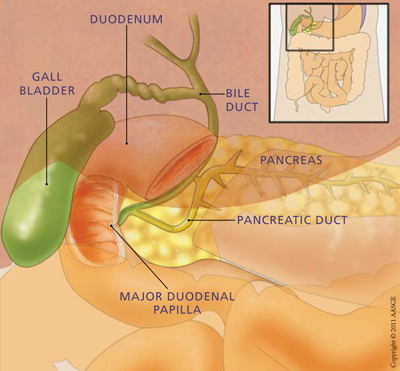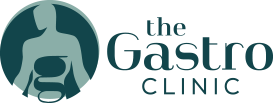Bile Duct Abnormalities
Overview
Your gallbladder stores bile while you eat, then releases bile into your small intestine to help digest food. Bile is made in the liver. Bile ducts are drainage “pipes” that carry bile from the liver to the gallbladder and from the gallbladder to the small intestine. Gallstones are the most common cause of blocked bile ducts. If the duct remains blocked, bacteria backs up and enters the blood stream, it may cause severe infection called ascending cholangitis. Symptoms may include cramping, nausea and fever.
the biliary tree & bile duct abnormalities
Bile is a mixture of bilirubin, cholesterol, salts, and bile acids. Bile is formed in the liver and collects in small tubes or bile ducts. All the bile ducts in the liver come together to form a main bile duct that drains directly into the small intestine. The gallbladder is located under your liver and is connected to the main bile duct. It serves as a reservoir for extra bile produced by the liver. The gallbladder squeezes sending the extra bile through the main bile duct and into the small intestine following meals to facilitate digestion.
A number of diseases can affect your bile ducts and gallbladder. Gallstones are a common cause of gallbladder symptoms and can even block the bile ducts. Gallstones are crystal deposits that can build up over a period of time. These deposits (stones), usually form inside the gallbladder, but can also travel from the gallbladder into the bile ducts and cause blockage. If the duct remains blocked, the bile can back up and leak into the blood stream. Eventually bacteria can accumulate and a severe infection (cholangitis) can develop. Additionally, bile duct blockage prevents bile from reaching the small intestine and may result in decreased digestion and absorption of some fats and vitamins.
symptoms of bile duct abnormalities
- Jaundice (yellowing of the skin) and/or Icterus (yellowing of the eyes). Both of these are caused by a buildup of a waste product called bilirubin in the blood.
- Itching (not necessarily in one area and may be worse at night or warm weather).
- Urine turning orange or dark brown.
- Fatigue
- Unexplained weight loss
- Fever or night sweats
- Abdominal pain, usually located on the right side under the rib cage.
- Discolored stool, pale without green or brown tones.
- Loss of appetite
when to notify your doctor
- If you have yellowing of the skin or eyes.
- If you have a fever and/or abdominal pain.
- If you develop other symptoms as listed above.
causes of bile duct abnormalities
- Gallstones which can be formed by excessive cholesterol
- Women are twice more likely to have gallstones due to pregnancy, hormone therapy, and/or birth control pills. All have increased cholesterol which decreases gallbladder movement.
- Inflammation of the liver or bile ducts.
- Autoimmune diseases Primary Sclerosis Cholangitis (PSC).
- Pancreatic tumors or growths.
- Inflammation of the pancreas (Pancreatitis)
diagnosis of bile duct abnormalities
Your doctor will take your medical history and examine you for symptoms. Blood test looking for high levels of bilirubin and other chemicals can aid in the diagnosis. Because liver inflammation (hepatitis) or liverscarring (cirrhosis) may show similar symptoms, you will be asked about your alcohol consumption, drug use and sexual practices.
If your physician suspects a bile duct problem, additional tests may be ordered. Many of these test provide imaging of the liver, bile ducts and gallbladder. Some of these test include:
- Ultrasound
- CT scan
- MRI
- Endoscopic Ultrasound
- X-rays
- Biopsy

treatment of bile duct abnormalities
Treatment varies depending on the underlying disease process. Once the appropriate diagnosis has been formulated, treatment can begin.
- Antibiotics
- Medications to reduce inflammation
- Gallbladder removal (cholecystectomy)
- Endoscopic retrograde cholangiopancreatography (ERCP)
- The ERCP procedure allows removal of stones from the bile ducts and placement of stents to relieve bile duct obstructions.
